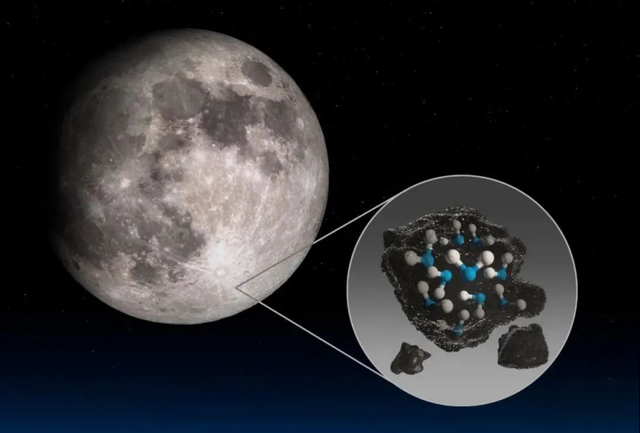Scientists: Moon Holds More Water than Ever Thought
The moon may hold water in more places and in larger amounts than scientists have suggested in the past.
The finding is based on two studies – published in Nature Astonomy — that examined new data from the U.S. space agency NASA. The discovery could be important for planned, long-term human bases on the moon. It could mean that enough resources exist on the moon itself to provide drinking water and possibly help produce rocket fuel.
Until about 10 years ago, scientists believed the moon was mostly dry. Then, a series of findings provided evidence that water ice was widespread in small amounts on parts of the moon. The ice was thought to be in areas permanently blocked from sunlight.
But in one of the new studies, NASA said it was able to confirm the presence of water molecules on sunlit parts of the lunar surface. The space agency says the identification came from data collected by its SOFIA airborne observatory. SOFIA is a Boeing 747SP aircraft equipped with a powerful telescope.
The research was led by Casey Honniball of NASA's Goddard Space Flight Center in Maryland. "Without a thick atmosphere, water on the sunlit lunar surface should just be lost to space," Honniball said in a statement. "Yet somehow we're seeing it. Something is generating the water, and something must be trapping it there."
Scientists have suggested the source of the water may have been comets, asteroids, solar wind or interplanetary dust. The new research provides evidence the water may be surviving on sunlit lunar surfaces because it is attached to minerals.
"A lot of people think that the detection I've made is water ice, which is not true," Honniball told a news conference to announce the finding. "It's just the water molecules — because they're so spread out they don't interact with each other to form water ice or even liquid water."

The second study centered on so-called "cold traps" on the moon. These are areas of the lunar surface that exist in a state of permanent darkness where temperatures are below about minus 160 degrees Celsius. Scientists say temperatures this cold can hold frozen water for billions of years.
Researchers say they were able to reconstruct the size of the cold traps and where they sit from images and temperature readings from NASA's Lunar Reconnaissance Orbiter. They identified cold traps as small as a few meters across and others as wide as 30 kilometers.
Planetary scientist Paul Hayne of the University of Colorado, Boulder led the research on cold traps. He estimated there are likely "tens of billions" of traps. "Since the little ones are too small to see from orbit, despite being vastly more numerous, we can't yet identify ice inside them," Hayne said. "Once we're on the surface, we will do that experiment."
Hayne's team says the new research suggests more than 40,000 square kilometers of the moon's surface may have the ability to trap water in the form of ice. That estimate is 20 percent bigger than predicted in the past, Hayne said.
Jacob Bleacher is the chief exploration scientist for NASA's Human Exploration and Operations Mission Directorate. He told reporters the agency believes it is very important to find out more about where the water came from and how accessible it is.
"Water is extremely critical for deep space exploration. It's a resource of direct value for our astronauts," Bleacher said. He noted that water is heavy and costly to transport from Earth.
"Anytime we don't need to pack water for our trip, we have an opportunity to take other useful items with us," he said. That may include materials that could be used to carry out bigger scientific experiments on the moon.
I'm Bryan Lynn.












